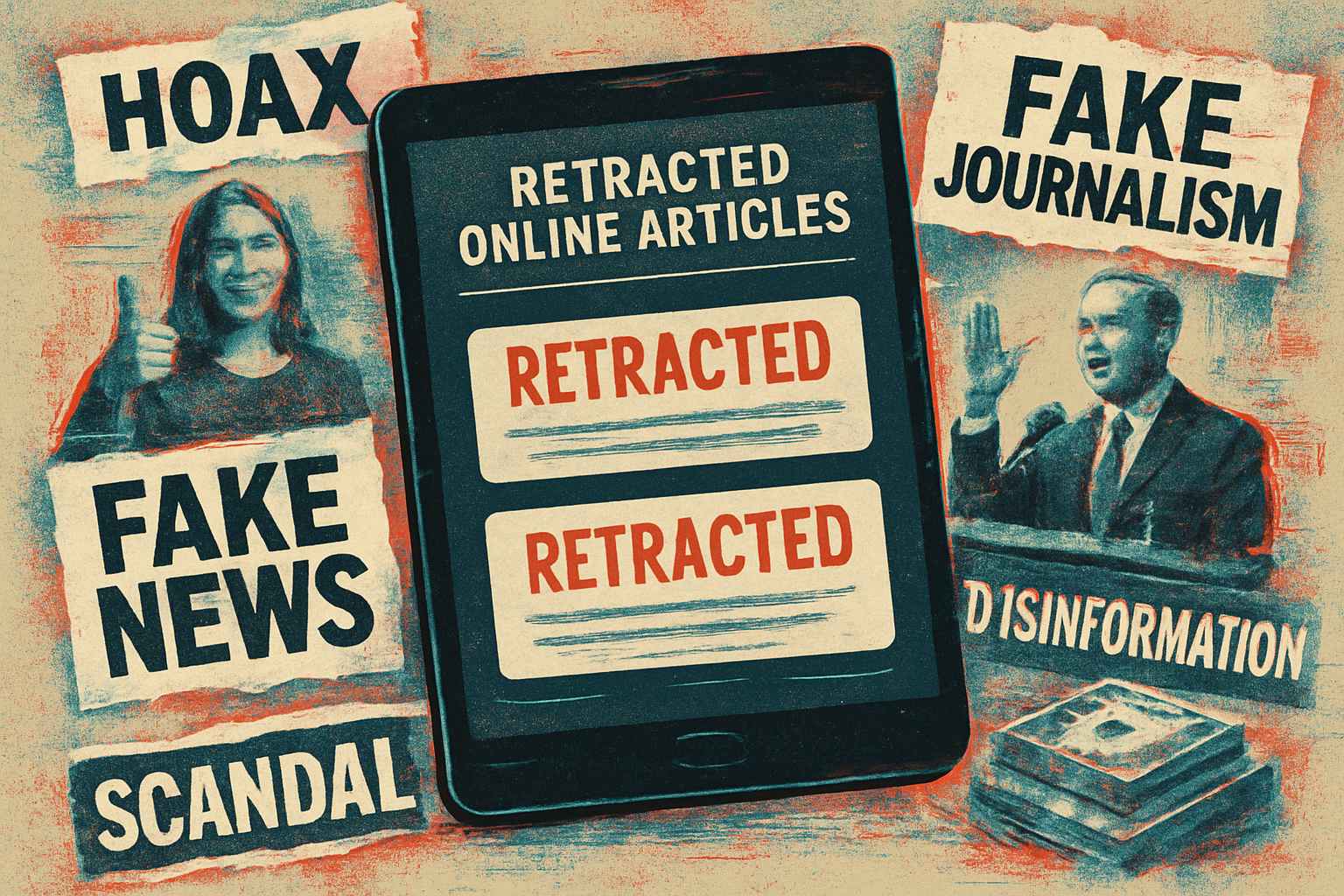
AI CERTS
22 hours ago
Wired Retraction Highlights Fake Journalism Risks For Newsrooms
This article unpacks the timeline, exposes warning signs, and offers practical safeguards for professionals confronting rising content Fabrication. Ultimately, the goal is clear. Newsrooms must adapt rapidly or risk further credibility erosion caused by Fake Journalism.
Timeline Of Recent Events
Understanding the chronology clarifies how the fraud progressed. Furthermore, it shows how many checkpoints failed. Investigations revealed coordinated Fabrication across multiple outlets, not just Wired. Below is a concise rundown.

- May 7 2025 – Wired publishes the Minecraft wedding feature by “Margaux Blanchard.”
- Mid-August – Dispatch editor Jacob Furedi receives a pitch mentioning “Gravemont, Colorado.”
- Aug 21 2025 – Wired releases a candid explainer admitting mistakes and retracts the piece.
- Late August – Six outlets, including Business Insider, flag and remove related essays.
- Sep 6 2025 – The Washington Post confirms Business Insider deleted 38-plus essays.
These milestones display escalating alarms within weeks. However, initial publication errors stretched back months. Consequently, editorial processes appeared reactive, not proactive. The pattern underscores how easily Fake Journalism infiltrates respected brands. Therefore, early vigilance remains essential before stories go live.
Early Red Flags Exposed
Several signals hinted the freelancer was fraudulent. Nevertheless, they were missed or dismissed. First, Wired struggled to pay the writer through its vendor system. Consequently, editors resorted to PayPal. Secondly, no public records confirmed sources or even the town of “Gravemont.” Additionally, follow-up calls produced vague answers and dead phone numbers.
Furthermore, two commercial AI Detection tools labeled the draft “likely human.” This false negative lulled editors. In contrast, manual checks would have revealed unsupported anecdotes and unverifiable quotes. Jacob Furedi later remarked, “You can’t make up a place,” summarizing the core oversight. Collectively, these clues indicated looming Fabrication, yet gaps in Editorial Standards allowed the story to pass.
Ignoring such indicators enabled another wave of Fake Journalism. Moreover, smaller sites with fewer resources proved even more vulnerable. These warning stories emphasize the cost of inadequate verification. Consequently, news leaders must upgrade both technical and human gatekeeping.
Limits Of AI Detection
Many editors now rely on automated classifiers to flag machine-generated prose. However, the Wired case highlights their shortcomings. Two independent tools could not confirm AI use, producing misleading reassurance. Therefore, sole dependence on these systems is risky.
Generative models often blend real facts with invented details. Consequently, AI Detection algorithms struggle when prompted texts receive heavy human editing. Moreover, vendors rarely disclose training data, limiting transparency. Reporters Without Borders warned that synthetic fraud offers “low-cost, insidious attacks.”
Professionals should treat detection reports as advisory, not decisive. In contrast, phone interviews, document checks, and on-site confirmation remain stronger defences. Emphasising multi-layered review reduces exposure to Fake Journalism. Subsequently, combining human scepticism with evolving software will raise the barrier against future Fabrication.
Impact On Editorial Standards
The scandal forced multiple outlets to reassess policies. Wired admitted the feature skipped senior fact-check review. Business Insider removed dozens of essays, citing identity doubts. Additionally, smaller publications opened audits after Press Gazette coverage.
Consequently, tighter Editorial Standards now top management agendas. Many newsrooms introduced mandatory ID verification for first-time contributors. Furthermore, editors demand raw interview recordings and public record links. Meanwhile, finance teams refuse payment without confirmed tax details. Such measures may feel bureaucratic. Nevertheless, they directly combat Fake Journalism and systemic Fabrication.
The episode also triggered culture change. Staffers realise that glamorous human-interest stories merit equal rigour as political scoops. Moreover, leaders emphasise transparency through public correction notes. These adjustments rebuild trust eroded by the breach. However, long-term vigilance will decide their durability.
Operational Lessons For Newsrooms
Teams seeking actionable guidance can follow proven steps.
- Verify identity early using official documents and phone calls.
- Insist on source contact lists before acceptance.
- Cross-check every proper noun with public databases.
- Run, but never solely trust, AI Detection tools.
- Assign senior editors to all immersive features.
Additionally, managers should cultivate forensic literacy around payment systems and metadata. Consequently, suspicious patterns surface faster. Professionals can enhance their expertise with the AI Product Manager™ certification. Coursework covers risk modelling and workflow design, skills directly relevant to Fake Journalism defence.
These tactics tighten Editorial Standards without stifling creativity. Therefore, organisations can still champion ambitious storytelling while blocking fraudulent submissions.
Future Safeguards And Certifications
Technologies and policies will continue evolving. Moreover, news companies are exploring blockchain-based credentialing to track contributor histories immutably. In contrast, some favour federated identity platforms shared across publishers. Both approaches complement improved AI Detection.
Training also matters. Subsequently, editors are enrolling in specialised courses on generative models, bias auditing, and digital forensics. Formal programs, such as the linked AI certification above, bridge technical gaps and strategic thinking. Consequently, employees gain structured methods for spotting Fabrication early, limiting avenues for Fake Journalism.
The industry must collaborate on open standards, shared watchlists, and transparent correction protocols. Nevertheless, competition often delays collective action. A balanced path pairs cooperation on core safety with rivalry in storytelling excellence.
In summary, the Wired episode exposed vulnerabilities that threaten every newsroom. However, clear lessons and tools now exist. By implementing strict verification, blending human judgement with careful AI Detection, and investing in targeted certifications, organisations can restore trust and thwart the next wave of Fake Journalism.



